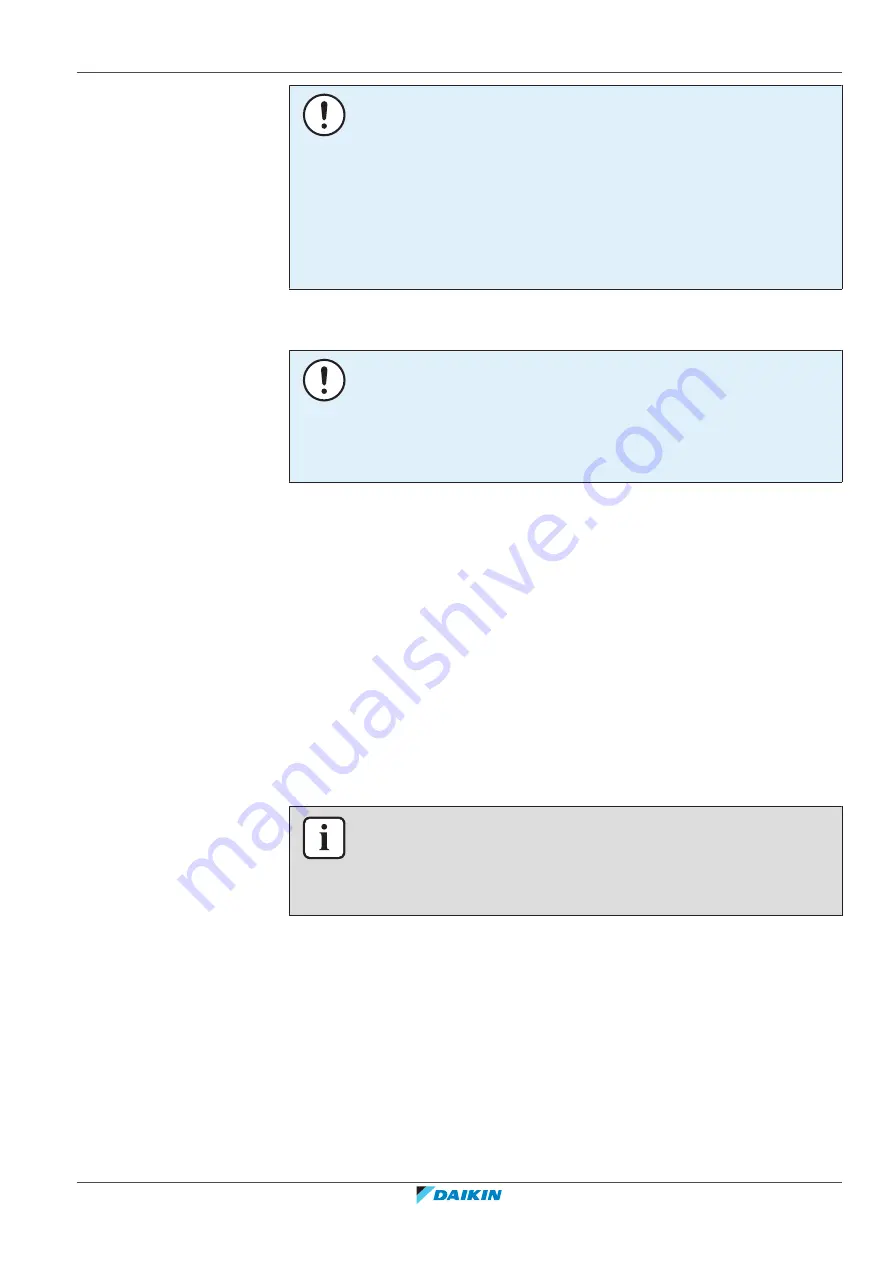
18
|
Piping installation
Installer and user reference guide
93
RXYLQ10~14T7Y1B*
VRV IV system air conditioner
4P543427-1A – 2020.10
NOTICE
ALWAYS use a recommended bubble test solution from your wholesaler.
NEVER use soap water:
▪
Soap water may cause cracking of components, such as flare nuts or stop valve
caps.
▪
Soap water may contain salt, which absorbs moisture that will freeze when the
piping gets cold.
▪
Soap water contains ammonia which may lead to corrosion of flared joints
(between the brass flare nut and the copper flare).
18.3.5 To perform vacuum drying
NOTICE
The connections to the indoor units and all indoor units should also be leak and
vacuum tested. Keep, if existing, all (field supplied) field valves to the indoor units
open as well.
Leak test and vacuum drying should be done before the power supply is set to the
unit. If not, see
"About checking the refrigerant piping"
90] for more information.
To remove all moisture from the system, proceed as follows:
1
Evacuate the system for at least 2 hours to a target vacuum of –100.7 kPa
(–1.007 bar)(5 Torr absolute).
2
Check that, with the vacuum pump turned off, the target vacuum is
maintained for at least 1 hour.
3
Should you fail to reach the target vacuum within 2 hours or maintain the
vacuum for 1 hour, the system may contain too much moisture. In that case,
break the vacuum by pressurising with nitrogen gas to a gauge pressure of
0.05 MPa (0.5 bar) and repeat steps 1 to 3 until all moisture has been
removed.
4
Depending on whether you want to immediately charge refrigerant through
the refrigerant charge port or first pre-charge a portion of refrigerant through
the liquid line, either open the outdoor unit stop valves, or keep them closed.
See
95] for more information.
INFORMATION
After opening the stop valve, it is possible that the pressure in the refrigerant piping
does NOT increase. This might be caused by e.g. the closed state of the expansion
valve in the outdoor unit circuit, but does NOT present any problem for correct
operation of the unit.
18.3.6 To insulate the refrigerant piping
After finishing the leak test and vacuum drying, the piping must be insulated. Take
into account the following points:
▪
Make sure to insulate the connection piping and refrigerant branch kits entirely.
▪
Be sure to insulate the liquid and gas piping (for all units).
▪
Use heat resistant polyethylene foam which can withstand a temperature of 70°C
for liquid piping and polyethylene foam which can withstand a temperature of
120°C for gas piping.
Содержание VRV IV
Страница 155: ......
Страница 156: ...4P543427 1A 2020 10 Copyright 2018 Daikin Verantwortung f r Energie und Umwelt...
















































